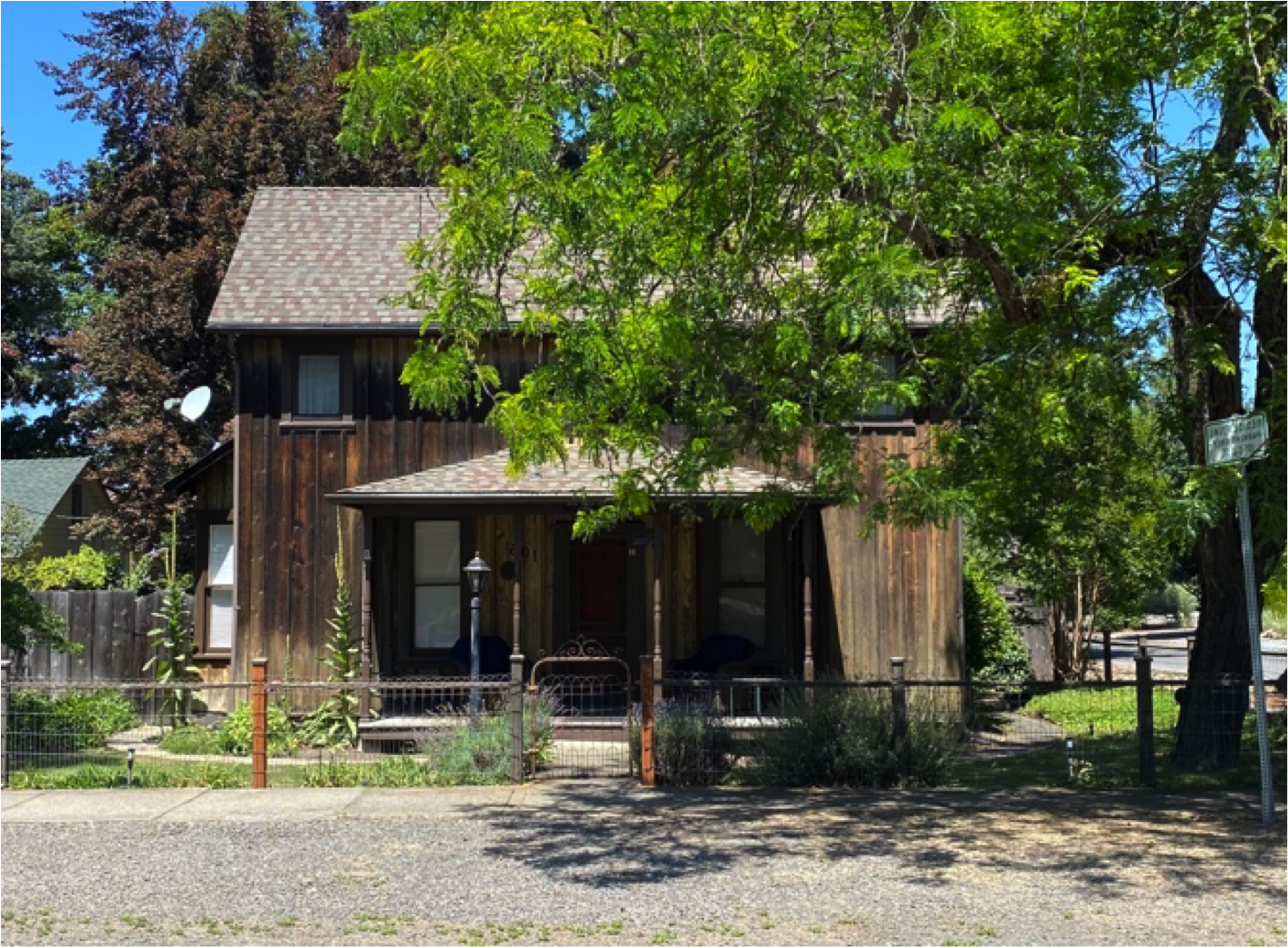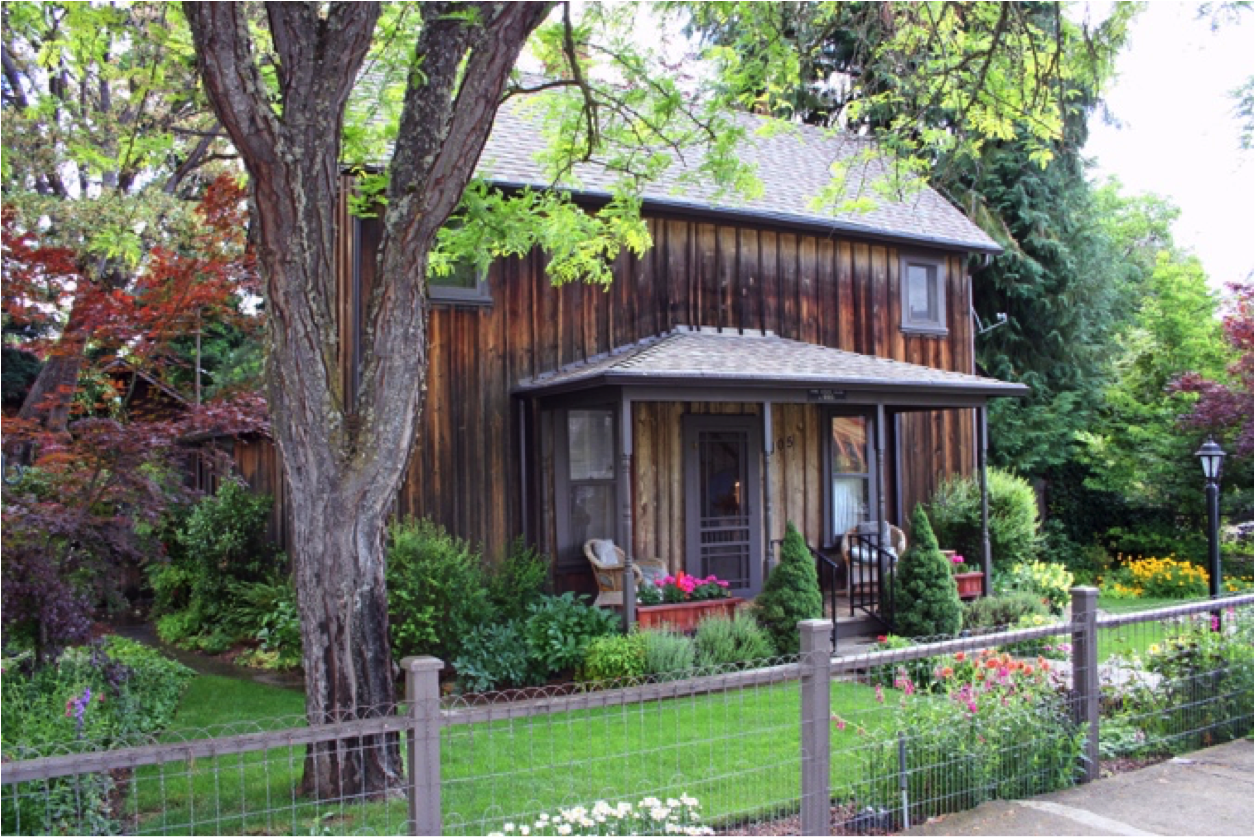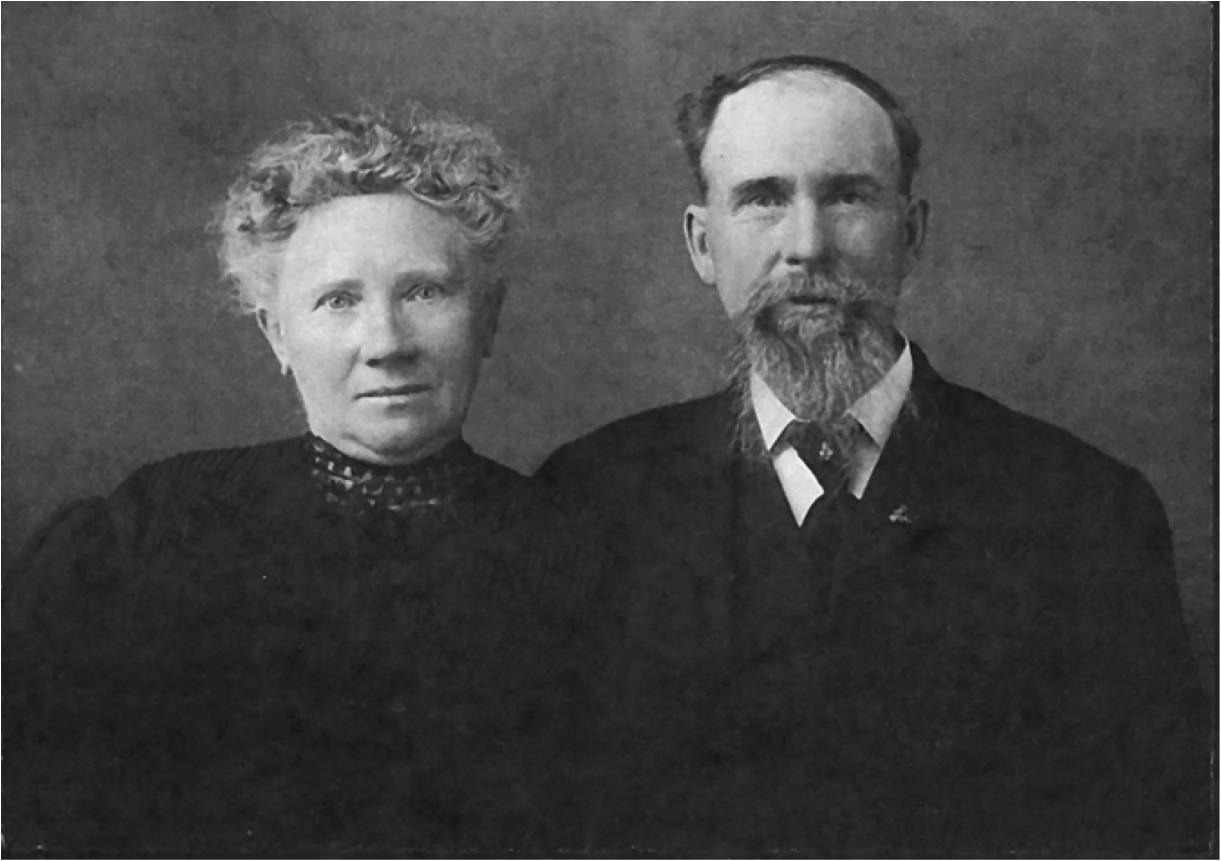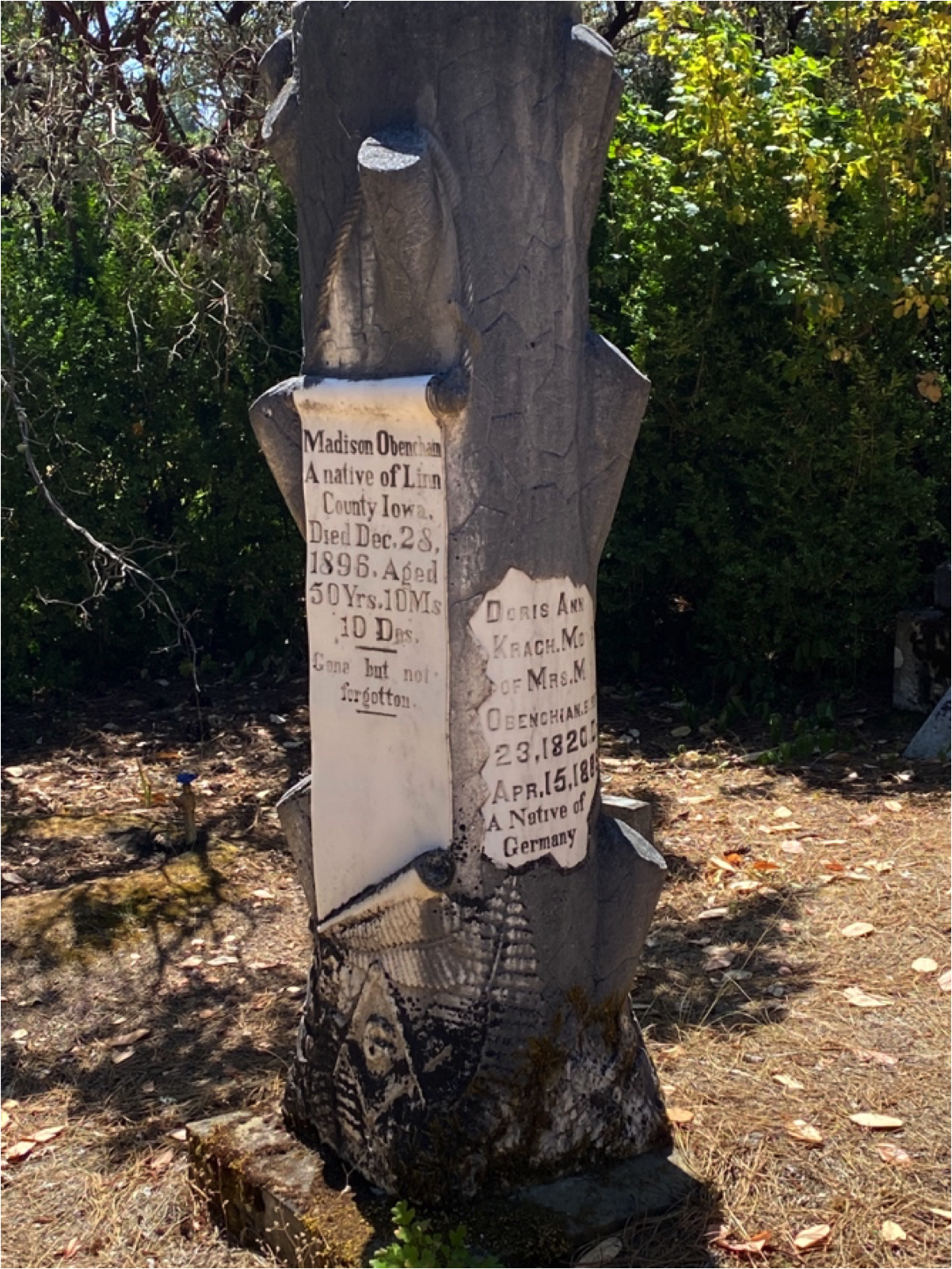|
A Virtual Walk Through Jacksonville History
Stop 9: Minnie Obenchain Lewis/Chris Keegan House
Next, we’ll head across Fifth Street two blocks to Third and D and the Minnie Obenchain Lewis/Chris Keegan House at 105 East D Street.
 Photo credit: Carolyn Embry Photo credit: Carolyn Embry
 Photo credit: Carolyn Kingsnorth Photo credit: Carolyn Kingsnorth
A later addition to the homes here in Jacksonville, this rectangular one-and-a-half storied wood frame house was constructed around 1908. It is one of only four residences in Jacksonville with board and batten exterior sheathing. Neither the builder nor the architect is known. Mrs. Minnie Obenchain Lewis purchased the property in 1901 and had the house built, about the same time she purchased another property on North 4th Street.
According to her tombstone, Minnie Obenchain, née Krach, was born in Wittenburg, Germany on March 10, 1853. She emigrated to the United States about 1872 with her widowed mother, settling on a farm near Jacksonville. Two years later on November 1, 1874, she married Madison Obenchain, the youngest child of John and Margaret Obenchain. Minnie and Madison had one son, Franklin, born in 1877.
Madison Obenchain’s father, John Obenchain (originally Abendschon), had mined gold in California for a time before returning to Iowa, having found “neighbors too many and near to be endured.” He and his family set out for Oregon, arriving about 1862, and started a ranch near Butte Creek. It’s a shame they didn’t move right into Jacksonville because John had a fascinating, well-documented life and history. Alas, this isn’t a Historic Walk Through Butte Creek, so onward.
Madison, or Mat as he was called in some sources, worked on his father’s ranch until he was about 25 years of age, when he came to Jacksonville and worked for a brief time as a butcher. However, according to the Oregon Sentinel, he continued to tend and move his father’s stock from Klamath County to and from the Lake County both before and after his marriage to Minnie in 1874. In 1881 the couple reportedly left Jacksonville to set up their own ranch in Klamath County.
Even though Klamath became a separate county in 1882, the Oregon Sentinel still reported Mat’s movements (and flare up of “rheumatics”) as local items as late as 1883. The newspaper reported Minnie attending a masquerade ball at the U.S. Hotel in January of 1884. At some point in 1884, Mat was elected a County Commissioner for Klamath County, indicating a more consistent residency in that county, and local newspaper coverage slacked off.
By 1896, the Obenchains were back in Jacksonville. Only fifty years of age, Mat died here on December 29, 1896, after a prolonged illness, cared for by his “faithful and devoted wife” Minnie. His obituary states that Mat had been an invalid for three years, due to a “softening of the brain, and his death was a relief as all the medical aid procurable could not have cured him.” At the time of his death, Mat and Minnie’s Klamath County ranch, between Lakeview and Klamath Falls, was over 400 acres.
Minnie owned the Klamath County ranch together with her son Franklin. Franklin stayed to manage the ranch and she returned permanently to Jacksonville. According to the 1904 Portrait and Biographical Record of Western Oregon, “her motherly and domestic spirit is shown in the air of comfort which pervades the interior [of her home], and the love of nature which is manifest in the pretty arrangements of flowers and shrubs on the surrounding grounds.”
Minnie‘s second marriage was around 1908 to George Lewis, proprietor of the Union Livery Stables on California Street and one year her junior.
 Minnie and George Lewis. Photo Credit: SOHS #23436 Minnie and George Lewis. Photo Credit: SOHS #23436
In 1910, George and Minnie also owned a subdivision called the “Lewis Subdivision to Jacksonville.” It consisted of approximately eight acres on the south side of town between Fourth and Fifth Streets, and Oak Street and Lewis Avenue.
In 1919, Minnie sold the D Street house to Chris Keegan and his wife, although the Keegan family apparently occupied the home for several years before Keegan purchased it.
Keegan seems to have been a “jack” of many trades. In 1899, the Democratic Times had observed that “Chris Keegan distinguished himself as an architect and builder in the construction of a substantial fence around the county jail. It should have been built long ago.”
 Luy & Keegan Saloon. Photo Credit: SOHS #12602 Luy & Keegan Saloon. Photo Credit: SOHS #12602
In 1911, the Medford Mail Tribune noted that Chris Keegan and Harry Luy had “purchased the Neuber building, now occupied by the Poodle Dog Restaurant, and will transform it into a liquid refreshment parlor.” In the 1930 census, Keegan is listed as a “stone cutter.”
Minnie died in Jacksonville in 1929. She was buried with Madison, and her mother, Dora Krach, in the Jacksonville Cemetery, where their plot is marked with tree-trunk shaped marker. The tree trunk is a Victorian symbol indicting the brevity of life. The number of broken branches often indicates the deceased family members buried in the plot.

 Photo Credit: Carolyn Embry Photo Credit: Carolyn Embry
Join us next week as we continue our virtual Walk Through Jacksonville History with a look at the Matthew Kennedy House, and the fine-looking pioneer himself.
Sources/References:
Lockley, Fred. Portrait and Biographical Record of Western Oregon. Chapman Publ. Co., 1904.
Miller, Bill. “Trees of Stone.” Medford Mail Tribune, 2 Sept. 2012.
“Obituaries.” Medford Mail, 1 Jan. 1897, p. 3.
Oregon Sentinel, 28 Sept. 1872; 5 October 1872; 5 September 1878; 15 January 1879; 2 April 1879; 14 May 1879; 14 April 1880; 12 May 1880; 30 June 1880; 28 May 1881; 15 october 1881; 28 October 1882; 2 December 1883; 17 March 1883; 21 April 1883; 5 January 1884; 5 February 1884; 17 May 1884; 7 June 1884
State of Oregon Inventory of Historic Properties
“Jacksonville Jottings,” Medford Mail Tribune, April 16, 1911, page C3
|